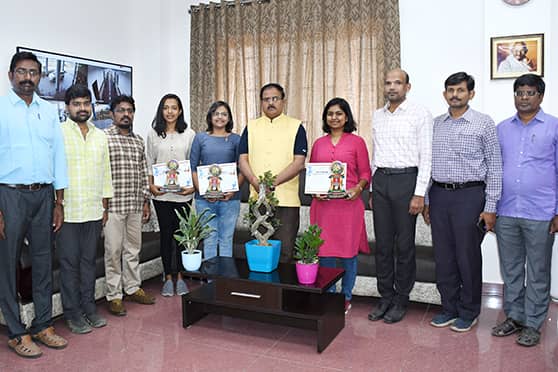NIT Andhra Pradesh researchers develop technology for removal of pollutants from water


A scaled-up version of this work can provide a sustainable solution for the removal of pollutants, particularly textile effluents, from water systems and
Researchers from the National Institute of Technology (NIT) Andhra Pradesh have developed a technology that can help remove textile industrial pollutants from water bodies, the institute said in a statement recently.
“The key challenge towards the treatment of textile dye effluent is the presence of salts and high concentration of dyes which interferes with the process of degradation. It is beneficial if a technology is developed by using the salts which are innately present in the effluent. By keeping this as the strategical point, the team has developed an advanced oxidation Process which works well in the high saline conditions towards the complete removal of textile dyes,” said VC Padmanaban, assistant professor at the Department of Biotechnology, NIT Andhra Pradesh.
Padmanaban led a team of three NIT scholars – Gindi Neha Madhav, Sadhana Pitambar Patil and Avanti Bhute – during the research.
The team came up with the idea of a continuous reactor for the treatment of textile industrial effluent by nano coupled advanced oxidation process. The students have initiated this research towards the mission of clean water by recycling the pollutants from Tirupur, Tamil Nadu.
NIT Andhra Pradesh researchers secured the second place for this research at Avishkaar-2022, an innovation contest for students conducted by Andhra Pradesh Council of Science and Technology (APCOST) in collaboration with the AICTE, at Adikavi Nannaya University (AKNU-Rajamahendravaram) from March 4 to 5.
The thermal activation of salts results in the generation of reactive radicals. The process focuses on the simultaneous generation of hydroxyl and sulphate radicals which catalyses the removal of dye pollutants, NIT Andhra Pradesh stated in a press communique.
The rate of removal was almost doubled by the addition of ferrous tagged biochar nanocomposite which acts as a heterogeneous catalyst. Based on the developed process, an integrated reactor was designed for the continuous removal of textile dyes, the institute added in its communique.
A scaled-up version of this work can provide a sustainable solution for the removal of pollutants from water systems and provide clean water.
CSP Rao, director, NIT Andhra Pradesh, said, “I encourage the team to proceed the research towards the transfer of technology for the benefit of the society and insist the importance of interdisciplinary research for the development of indigenous technologies towards the mission of Atmanirbhar Bharat.”